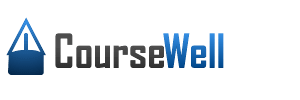Medical Administration Careers: 15 Reasons Why Medical Scribes are Valued and Appreciated by Doctors
By Walter Rodriguez, PhD and Valerie Weiss, MD
More and more often, medical scribes are being recognized by physicians in all healthcare settings. Physicians are becoming more aware of the Medical Scribes' qualifications and how they can assist them in their medical practice.
Medical scribes allow for a dynamic conduit between a tangible record and a patient encounter, including the care provided. The role of the medical scribe is more than relevant because physicians are traditionally trained for direct patient care rather than for clerical work.
Below are fifteen (15) reasons why Medical Scribes are valued and appreciated by primary-care clinics, hospitals, healthcare administrators, physicians and specialists.
1. Medical scribes are able to navigate electronic medical records (EMR) with ease, while shadowing a physician. In this way, the physician can focus on the patient, rather than on a computer screen.
The scribe is able to record the physician’s interaction with the patient, including all of the following: physical exam findings, medical decision-making, laboratory results, radiological reports, clinical re-evaluations, consultations, and dispositions. Medical scribes are given unique logins and passwords.
2. Scribes are intimately familiar with HIPAA regulations. In this way, they can maintain the patient's privacy and the institution's security. The federal Health Insurance Portability and Accountability Act was passed in 1996 with a primary goal is "to make it easier for people to keep health insurance, protect the confidentiality and security of healthcare information and help the healthcare industry control administrative costs."
3. Scribes understand the flow of information and the function of the various medical departments in a variety of healthcare settings. i.e., hospitals -- including ED (emergency department) or ER (emergency room).
Scribes are being employed in many arenas of the healthcare field including primary care clinics, hospitals -- including the ED (emergency department) or ER (emergency room), and urgent care centers.
4. Medical scribes understand basic medical terminology and can converse with other members of the medical staff--including hospital administrators, physicians, pharmacists, nurses, medical coders, and so on. If they work with a specialist, they quickly learn highly specialized terms.
5. Scribes become versed in general anatomy and physiology. In their formal certification training, medical scribes are introduced to all of the major organ systems of the body. They understand the "roadmap to the body" and how the organs function. This knowledge provides them with an appreciation of the human body and its complexity.
Many scribes use this knowledge and invaluable experience as a stepping-stone to further education and training in any health-related field.
For example, some medical scribes go on to study nursing or medicine. And some leverage their medical scribe's experience (shadowing the physician) in their application to medical school.
6. Medical Scribes fully understand the methodology of writing of the HPI (History of Present Illness). For instance, scribes are able to record a chronological description of the development of the patient's illness from the first sign and/or symptom or from the previous encounter to the present--including the following elements: location, quality, severity, duration, timing, context, modifying factors, and associated signs and symptoms.
7. Scribes are aware of billing codes and principles as they pertain to the medical chart.
A well-written medical record will result in smoother claims processing and provides a medico-legal resource as to the care provided.
8. Medical Scribes are familiar with common medications and will become familiar with specialist's medications, as they go on rounds with physicians.
9. Scribes understand information systems technology, including flow and control of information as well as the technological platforms available.
“they allow for physician to leverage time and see more patients or spend more time with individual patient as less time is spent doing clerical work ... the record may actually be more complete with scribe completing and adding more text or completing ‘meaningful use’ boxes required by third part payers and therefore coding may be more consistent with submitted bill therefore shorter time for reimbursement by the insurance company because chart meets criteria for submitted bill ... lastly, data is better able to be mined and queries submitted which allows for greater chance of meeting quality metrics”
”
10. Medical scribes communicate effectively and are able to use correct medical terminologies. They efficiently take medical notes and accurately record doctor’s patient interaction using electronic tools available.
11. Medical Scribes know the medical scribe tools and information systems available for improving efficiency and effectiveness and healthcare decision-making. They are able to recognize characteristics of various medical scribe systems. In addition, scribes can recognize benefits from various medical scribe systems and understand the cost and issues of various medical scribe systems.
12. Medical Scribes recognize the sources of system threats and ethical implications associated with patient information security and privacy issues, and explain how organizations can address these issues.
13. Scribes recognize network and mobile technologies used in medical practice as well as the issues associated with network and mobile technologies.
14. Medical Scribes can also describe the sources of information security and protection in medical information systems.
Medical scribes recognize the importance of an electronic health record that is connected to the Internet. Thus, they understand the vulnerability of the patient’s chart and the importance of preventing a breach in security.
15. Finally, scribes recognize or describe approaches and technologies that could be used by hospitals to meet the information privacy regulations and standards (technologies and employee training, etc.). They recognize information privacy regulations and standards with which health care facilities must comply. And, more importantly, they recognize the ethical implications of medical scribe information systems.

